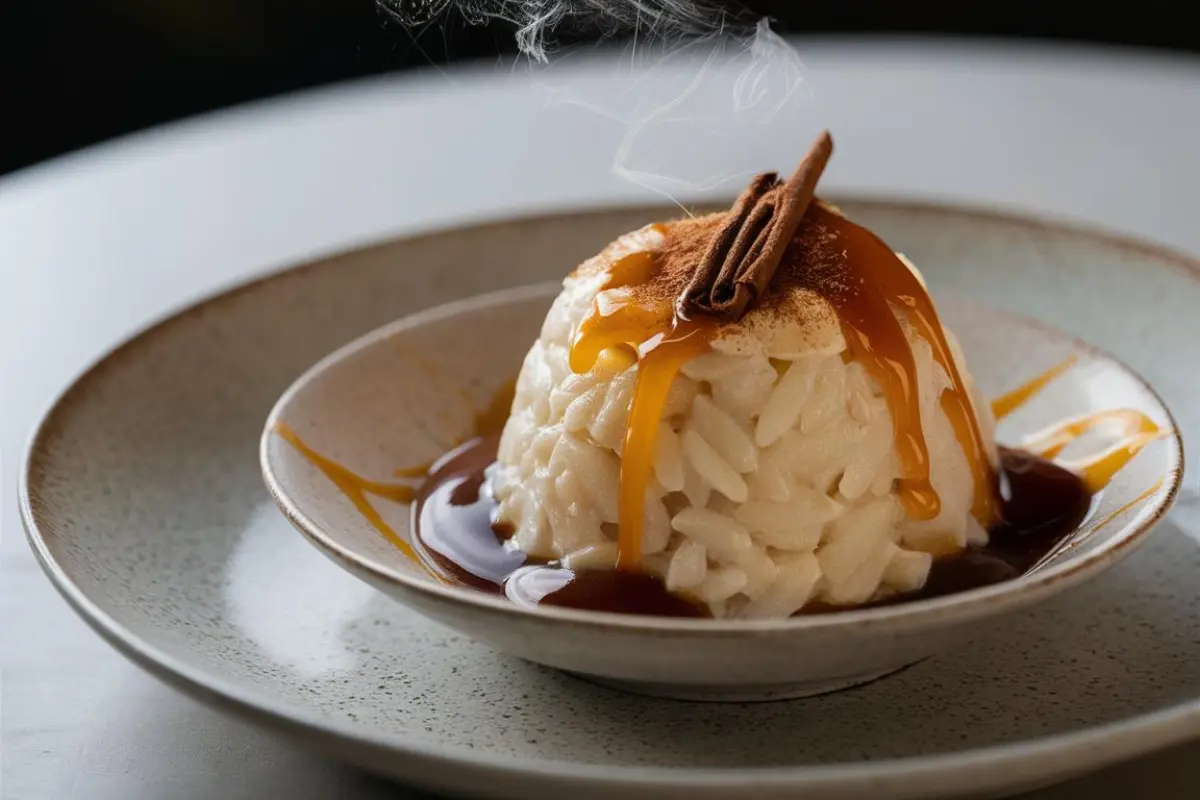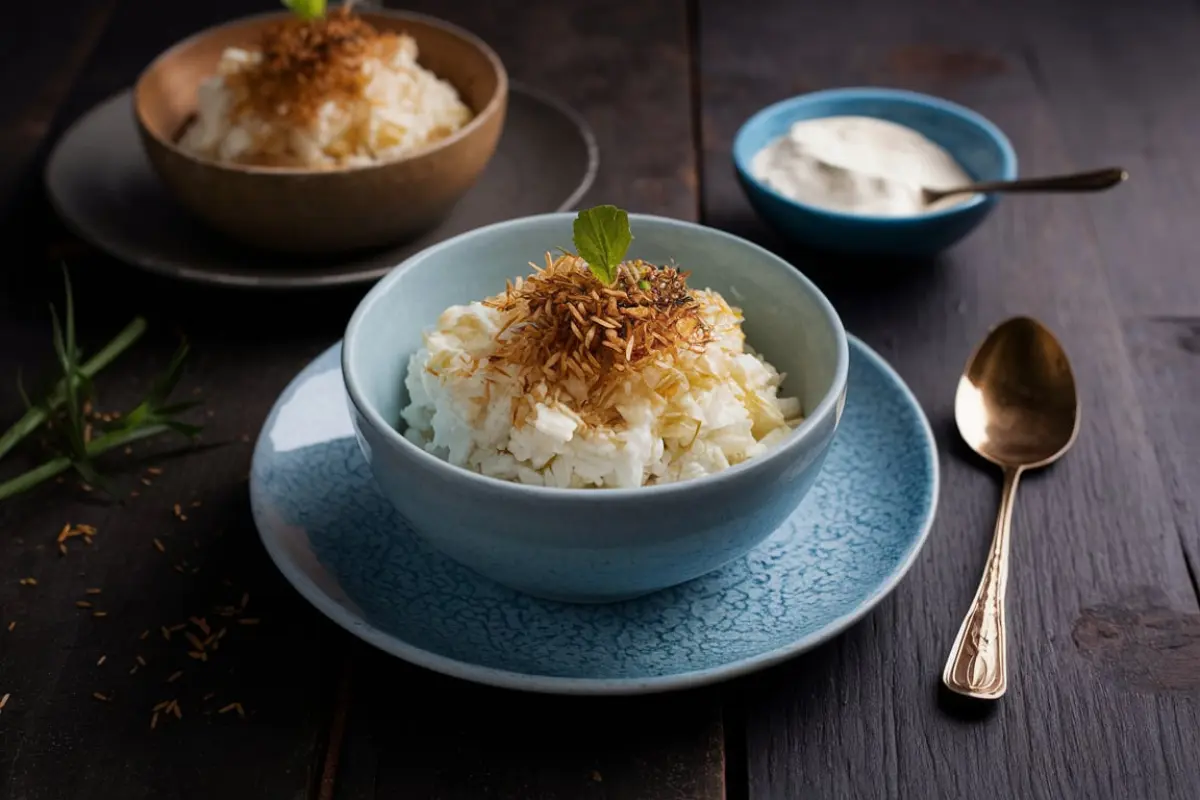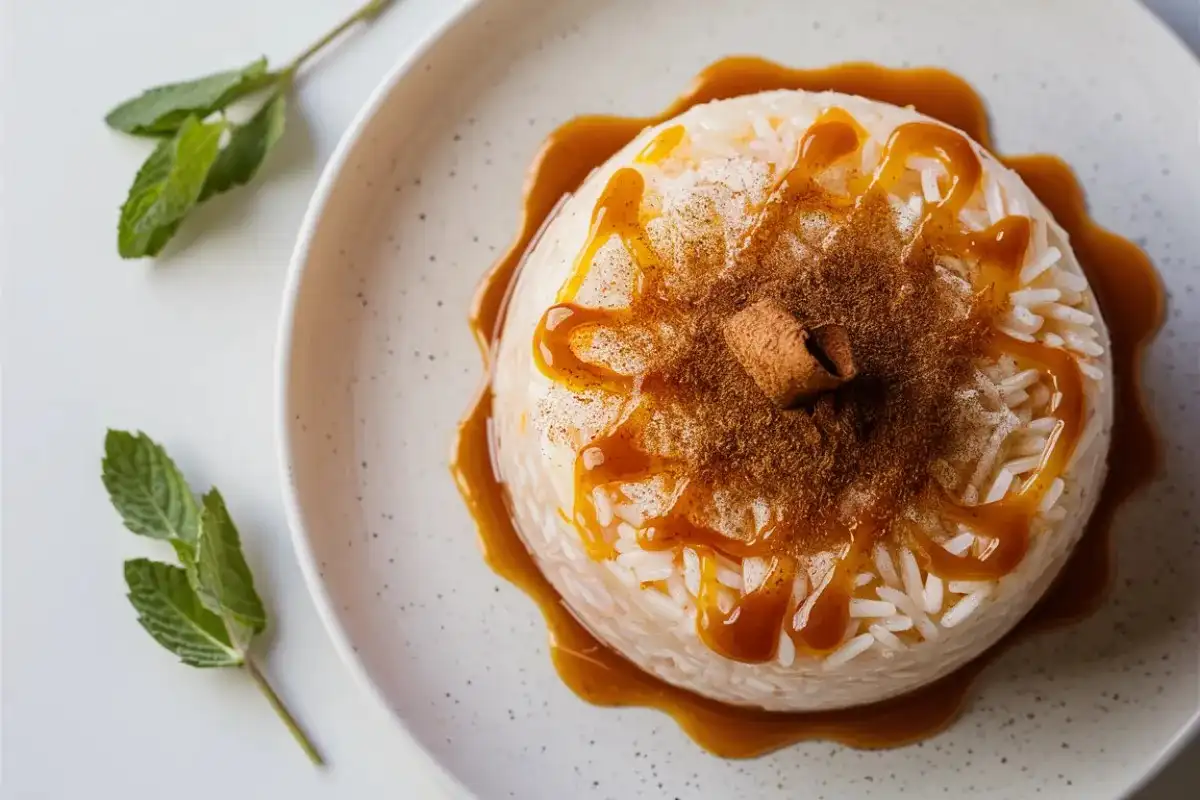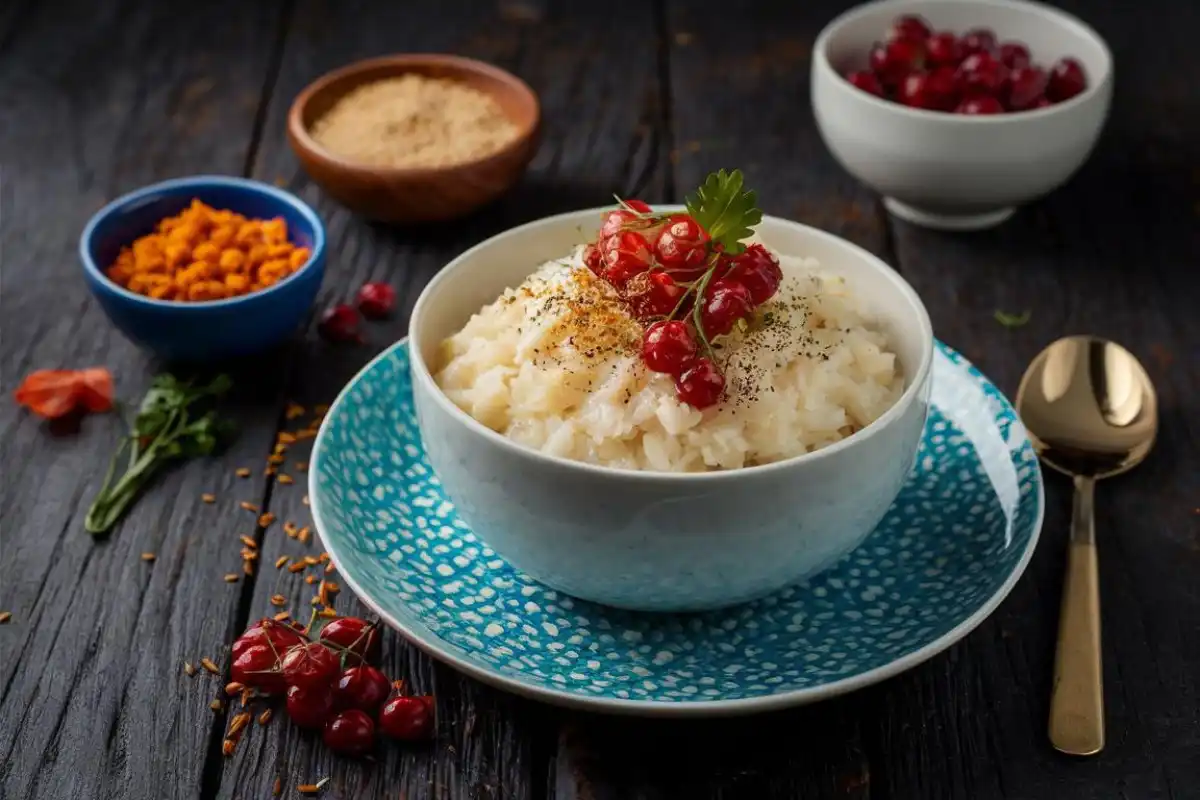The rice pudding recipe is a beloved dessert that has graced tables around the world for centuries. This comforting treat, with its creamy texture and rich flavor, is more than just a simple dish; it’s a dessert that carries a sense of nostalgia, warmth, and tradition. Whether served warm or cold, plain or with a myriad of toppings, rice pudding is a versatile dish that can be tailored to suit a variety of tastes. In this article, we’ll explore everything you need to know about making the perfect rice pudding, from selecting the right ingredients to mastering the cooking process. Whether you’re a seasoned cook or a beginner, this guide will help you create a rice pudding that’s not only delicious but also uniquely yours.
Rice Pudding Recipe: Introduction and Ingredients
To create the best rice pudding, you need to start with the right ingredients. The basics are simple, but the quality and type of each component can greatly influence the final product. Let’s delve into each ingredient and its role in making a creamy, satisfying rice pudding.
Choosing the Right Rice for Your Rice Pudding Recipe
The type of rice you choose is crucial for achieving the right texture. Here’s a closer look at some common options:
- Short-Grain Rice (Arborio): Often used in risottos, Arborio rice is prized for its high starch content, which contributes to a rich, creamy texture. Its ability to absorb liquids makes it ideal for rice pudding, where creaminess is key.
- Medium-Grain Rice: This type of rice offers a balance between creaminess and fluffiness. It holds its shape better than short-grain rice but still releases enough starch to create a smooth pudding.
- Long-Grain Rice (Basmati, Jasmine): While less common in traditional rice pudding recipes, long-grain rice like Basmati or Jasmine can be used for a more distinct texture. Basmati rice adds a nutty flavor, while Jasmine rice brings a subtle floral aroma.
Understanding the characteristics of different types of rice is crucial. For a deeper dive, check out this guide on different types of rice.
Milk Options for a Creamy Rice Pudding Recipe
Milk is the primary liquid used in rice pudding, and it’s what gives the dish its signature creamy texture. The type of milk you choose will directly affect the richness and flavor of your pudding.
- Whole Milk: The most traditional choice, whole milk provides a rich and creamy base for your pudding. The fat content in whole milk helps to create a smooth, velvety texture.
- Skim Milk: If you prefer a lighter pudding, skim milk can be used. However, the texture may be less creamy due to the lower fat content.
- Almond Milk: For a nutty flavor, almond milk is a great alternative. It’s thinner than cow’s milk, so you may need to adjust the cooking time to achieve the desired thickness.
- Coconut Milk: Coconut milk adds a tropical twist to your rice pudding. It’s thicker than most other milk alternatives, so it will result in a richer, denser pudding.
Each milk type brings its own unique texture and flavor, so don’t hesitate to experiment with what you like best. Explore dairy-free alternatives if you have dietary restrictions.
Sweeteners and Flavorings in Rice Pudding Recipe
The sweetness of your rice pudding is a key component of its overall flavor. Traditional recipes typically call for sugar, but there are many other sweeteners you can use, each adding a unique flavor profile to your pudding.
- Granulated Sugar: The most common sweetener, sugar dissolves easily in the milk and provides a straightforward sweetness that pairs well with the rich creaminess of the pudding.
- Brown Sugar: For a deeper, more caramel-like flavor, brown sugar is an excellent choice. It adds a touch of complexity and can enhance the richness of the pudding.
- Honey: Honey adds a natural sweetness with floral undertones. It’s a great alternative to sugar if you’re looking for a more nuanced flavor.
- Maple Syrup: Maple syrup brings a distinct, earthy sweetness to rice pudding. It pairs particularly well with toppings like nuts or cinnamon.
- Stevia: For a low-calorie alternative, stevia is a good option. It’s much sweeter than sugar, so a little goes a long way.
Feel free to mix and match these sweeteners to create a rice pudding that suits your taste. The choice of sweetener will affect the flavor profile, so pick one that complements your personal preferences.
Flavorings: Adding Depth and Warmth
Flavorings are what transform rice pudding from a simple dish into something extraordinary. Here are some popular choices:
- Vanilla Extract: A staple in many dessert recipes, vanilla extract adds a warm, comforting flavor to rice pudding. It’s a versatile ingredient that pairs well with almost any other flavoring.
- Cinnamon: Cinnamon adds a spicy warmth that complements the sweetness of the pudding. It’s often sprinkled on top of the finished dish, but can also be added during cooking for a more intense flavor.
- Nutmeg: Like cinnamon, nutmeg adds warmth and a slightly sweet, nutty flavor. It’s best used sparingly, as it can easily overpower the other flavors.
- Citrus Zest: For a fresh, bright flavor, try adding a bit of lemon or orange zest. The citrus notes can help to balance the richness of the pudding.
- Almond Extract: A few drops of almond extract can add a nutty, marzipan-like flavor that works beautifully with rice pudding.
These flavorings can be used individually or combined to create a rich, complex taste that will elevate your rice pudding to new heights.

Step-by-Step Rice Pudding Recipe Instructions
Creating the perfect rice pudding requires attention to detail, but it’s a relatively straightforward process. Here’s how to do it:
Step 1: Cooking the Rice
Start by cooking your rice. If using short-grain rice like Arborio, you’ll need:
- 1 cup of rice
- 2 cups of water
Rinse the rice under cold water to remove excess starch, then combine it with water in a pot. Bring to a boil, then reduce the heat to low, cover, and simmer for 15-20 minutes, or until the rice is soft and the water is absorbed.
Step 2: Heating the Milk
While the rice is cooking, heat your milk in a separate pot. You’ll need:
- 4 cups of milk (whole, almond, or your choice)
- 1/2 to 3/4 cup of sweetener (depending on your preference)
- 1 tsp of vanilla extract
- A pinch of salt
Heat the milk mixture over medium heat until it’s warm, but not boiling. Stir occasionally to ensure the sweetener dissolves completely.
Step 3: Combining the Ingredients
Once the rice is cooked, slowly add it to the warm milk mixture. Stir continuously to combine. Reduce the heat to low and let the pudding simmer, stirring frequently to prevent the rice from sticking to the bottom of the pot. This process should take about 25-30 minutes, during which the rice will absorb the milk and thicken the pudding.
Step 4: Finishing the Pudding
When the pudding has reached your desired consistency, remove it from the heat. At this point, you can stir in any additional flavorings, such as:
- 1/2 tsp of cinnamon
- A pinch of nutmeg
- 1 tsp of citrus zest (optional)
Taste the pudding and adjust the sweetness or flavorings as needed. Remember, the pudding will thicken further as it cools, so don’t worry if it seems a bit loose at this stage.
Step 5: Cooling and Serving
Rice pudding can be served warm, at room temperature, or chilled. To serve warm, simply ladle the pudding into bowls and top with your favorite garnishes. For a chilled pudding, transfer the mixture to a serving dish, cover, and refrigerate for at least 2 hours.
Serving Tips:
- For a creamy rice pudding, serve it slightly warm with a dollop of whipped cream.
- For a more refreshing take, serve the pudding chilled with a sprinkle of fresh fruit or nuts.

Stovetop vs. Oven-Baked Rice Pudding Recipe
Rice pudding can be prepared either on the stovetop or in the oven, each method offering a unique texture and flavor profile. Here’s how they differ:
Stovetop Method
The stovetop method is quicker and allows for more control over the texture. It’s ideal if you prefer a creamier pudding with a more uniform texture. The key to success with this method is to stir frequently, preventing the rice from sticking and ensuring even cooking.
Pros:
- Faster preparation time
- Easier to adjust consistency
- Creamier, more uniform texture
Cons:
- Requires constant attention
- More likely to stick or burn if not monitored closely
Oven-Baked Method
The oven-baked method, while more hands-off, results in a thicker, more custard-like texture with a golden crust on top. It’s perfect for those who enjoy a slightly firmer pudding with a caramelized flavor.
How to Bake Rice Pudding:
- Preheat your oven to 350°F (175°C).
- Prepare the rice and milk mixture as described in the stovetop method.
- Transfer the mixture to a buttered baking dish.
- Bake for 45-60 minutes, or until the pudding is set and the top is golden brown.
Pros:
- Less hands-on time
- Develops a golden, caramelized crust
- Thicker, custard-like consistency
Cons:
- Takes longer to cook
- Can become dry if overbaked
Both methods have their merits, so choose the one that best suits your preferences.
Variations of the Classic Rice Pudding Recipe
One of the joys of rice pudding is its versatility. It’s a dish that lends itself to countless variations, allowing you to tailor it to your taste. Here are some popular international variations and modern twists on the classic recipe.
International Variations
Rice pudding is a global dessert, with each culture adding its unique twist. Here are a few notable versions:
- Arroz con Leche: A popular Latin American version, Arroz con Leche is often flavored with cinnamon sticks and sometimes zest from citrus fruits like orange or lemon. Some variations include sweetened condensed milk, which adds extra creaminess and sweetness.
- Kheer: This South Asian version is made with basmati rice, milk, sugar, and a variety of spices such as cardamom and saffron. Kheer is often garnished with chopped nuts and dried fruits, adding texture and richness.
- Riz au Lait: A French classic, Riz au Lait is typically flavored with vanilla and sometimes a touch of rum. It’s often served with a fruit compote, which adds a sweet and tart contrast to the creamy pudding.
- Risalamande: A Danish Christmas dessert, Risalamande is a rice pudding mixed with whipped cream and chopped almonds, traditionally served with a warm cherry sauce.
- Sütlaç: A Turkish variation, Sütlaç is often baked in the oven until the top is browned and slightly caramelized. It’s usually flavored with vanilla or rose water, giving it a delicate and aromatic finish.
Modern Twists
If you’re looking to put a contemporary spin on rice pudding, consider these modern variations:
- Chocolate Rice Pudding: Add cocoa powder or melted dark chocolate to the milk mixture for a rich, decadent twist. Top with whipped cream and chocolate shavings for an indulgent treat.
- Coconut Mango Rice Pudding: Substitute coconut milk for dairy milk and stir in fresh or dried mango pieces. Garnish with toasted coconut flakes for a tropical flair.
- Spiced Pumpkin Rice Pudding: Perfect for fall, this variation incorporates pumpkin puree and spices like cinnamon, nutmeg, and ginger. Serve with a drizzle of maple syrup for extra sweetness.
- Berry Rice Pudding: Stir in fresh or frozen berries towards the end of cooking for a burst of fruity flavor. Blueberries, raspberries, and strawberries all work well in this variation.
- Caramel Rice Pudding: Swirl caramel sauce into the finished pudding for a rich, sweet addition. Top with a sprinkle of sea salt to balance the sweetness.
These variations demonstrate the flexibility of rice pudding and its ability to adapt to a wide range of flavors and ingredients.
Rice Pudding Recipe: Serving Suggestions and Toppings

The way you serve and garnish your rice pudding can elevate it from a humble dessert to a show-stopping dish. Here are some ideas to inspire your presentation:
Traditional Toppings
- Cinnamon and Nutmeg: A classic combination that adds warmth and spice to the creamy pudding.
- Raisins: Softened raisins add a touch of sweetness and texture. Soak them in warm water or rum for extra flavor before adding them to the pudding.
- Brown Sugar: Sprinkle a little brown sugar on top of the warm pudding for a caramelized finish as it melts.
- Butter: A small pat of butter on top of warm rice pudding can add a luxurious richness and shine.
Creative Additions
- Fresh Fruit: Top your pudding with fresh berries, sliced bananas, or diced apples for a refreshing contrast to the creamy base.
- Nuts: Toasted almonds, pecans, or walnuts add a crunchy texture and a nutty flavor that pairs well with the sweet pudding.
- Whipped Cream: A dollop of whipped cream adds a light, airy texture and enhances the pudding’s richness.
- Caramel Sauce: Drizzle caramel sauce over the pudding for a sweet, buttery flavor that complements the creamy texture.
- Chocolate Shavings: For a touch of decadence, sprinkle dark chocolate shavings over the top of the pudding. The warmth of the pudding will slightly melt the chocolate, creating a deliciously rich finish.
Pairing Ideas
- Tea or Coffee: A warm cup of tea or coffee pairs beautifully with rice pudding, especially if it’s served as a post-dinner dessert.
- Dessert Wine: A glass of sweet dessert wine, such as Sauternes or Moscato, can enhance the flavors of the pudding and provide a delightful contrast to its creamy texture.
- Fruit Compote: Serve rice pudding with a side of fruit compote or stewed fruit to add a sweet and tangy element that balances the richness of the pudding.
These serving suggestions and toppings can help you create a dessert that’s not only delicious but also visually appealing and tailored to your taste.
Storage and Reheating Tips for Rice Pudding Recipe
Rice pudding is a versatile dish that can be made ahead and stored for later enjoyment. Here’s how to store and reheat your pudding while maintaining its texture and flavor:
Storage
- Refrigeration: Rice pudding should be stored in an airtight container in the refrigerator. It will keep for up to 4 days. To prevent a skin from forming on the surface, press a piece of plastic wrap directly onto the surface of the pudding before sealing the container.
- Freezing: While not ideal, rice pudding can be frozen if needed. To freeze, transfer the pudding to an airtight container, leaving some space at the top for expansion. It can be stored in the freezer for up to 1 month. To thaw, transfer the pudding to the refrigerator and allow it to thaw overnight.
Reheating
- Stovetop: To reheat rice pudding on the stovetop, place it in a saucepan over low heat. Add a splash of milk or cream to restore its creamy texture as it warms. Stir frequently to prevent sticking and ensure even heating.
- Microwave: For a quick reheating option, place the pudding in a microwave-safe bowl, cover it with a damp paper towel, and heat in short intervals (30-45 seconds), stirring in between. Add a bit of milk if needed to maintain the creaminess.
- Oven: If you prefer a firmer texture, you can reheat rice pudding in the oven. Preheat the oven to 300°F (150°C), transfer the pudding to an oven-safe dish, cover it with foil, and bake for 15-20 minutes, or until warmed through.
Following these storage and reheating tips will ensure that your rice pudding remains delicious, even days after it’s been made.
Frequently Asked Questions about Rice Pudding Recipe
Here are answers to some frequently asked questions about rice pudding, addressing common concerns and offering tips to perfect your recipe:
Can rice pudding be made ahead of time?
Yes, rice pudding can be made up to 2 days in advance. Simply store it in the refrigerator and reheat it before serving. If you’re making it for a special occasion, consider preparing it the night before to save time and reduce stress on the day of your event.
How can I make my rice pudding thicker or thinner?
To thicken rice pudding, allow it to simmer longer on the stovetop, or add less milk during the cooking process. For a thinner consistency, you can add more milk or cream while cooking, or stir in some milk just before serving.
What can I do if my rice pudding is too sweet?
If your rice pudding turns out too sweet, you can balance the flavor by adding a pinch of salt or stirring in some unsweetened cream. Alternatively, serve it with a tart topping, such as fresh berries or a citrus compote, to offset the sweetness.
Is rice pudding gluten-free?
Yes, rice pudding is naturally gluten-free, provided that all the ingredients used are free of gluten. This makes it a great dessert option for those with gluten sensitivities or celiac disease.
How long does rice pudding last in the fridge?
Rice pudding can last up to 4 days in the fridge if stored properly in an airtight container. To maintain its creamy texture, press a piece of plastic wrap directly onto the surface before sealing the container.
Conclusion
Rice pudding is more than just a simple dessert; it’s a versatile and comforting dish that brings warmth to any meal. Whether you stick to a traditional recipe or explore international variations and modern twists, the possibilities are endless. With the right ingredients, careful preparation, and a bit of creativity, you can create a rice pudding that’s not only delicious but also uniquely tailored to your taste. So, whether you’re making it for a special occasion or just to satisfy a sweet craving, this creamy delight is sure to be a hit with everyone who takes a spoonful.

